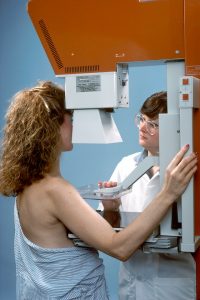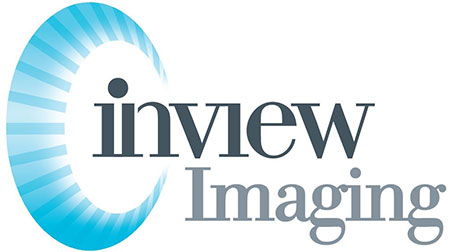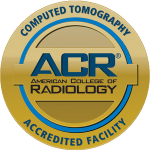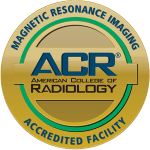Mammograms play a crucial role in safeguarding women’s health by detecting breast cancer early, increasing treatment success rates. Regular screenings like mammograms can catch abnormalities before they escalate, providing a fighting chance against cancers. Mammograms are vital for women over 40 as they face higher risks and need proactive measures for breast cancer screening to stay healthy.
Ensure you prioritize your well-being by understanding the significance of mammograms for breast cancer screening in patients. Stay informed about the benefits and importance of mammogram screenings to empower patients with knowledge and take charge of their health proactively.
1. Early Detection of Breast Cancer
Mammograms play a crucial role in the early detection of breast cancer, allowing for timely intervention and treatment. By detecting abnormalities such as tumors or calcifications, mammograms can identify breast cancer at its initial stages when it is most manageable.
Regular mammograms are instrumental in facilitating early detection, significantly improving the chances of successful treatment outcomes. Women who undergo routine mammogram screenings are more likely to have smaller tumor sizes and fewer instances of advanced-stage cancers compared to those who do not get screened regularly.
One significant advantage of mammograms is their ability to uncover breast cancer before any noticeable symptoms manifest. This early identification leads to higher survival rates as prompt medical interventions can be initiated promptly upon diagnosis.
Studies show that women with a family history of breast cancer or certain genetic mutations benefit greatly from regular mammograms as they are at a higher risk for developing the disease. Therefore, adhering to recommended mammogram screening guidelines is vital for all women, especially those with predisposing factors.
Early detection through mammography remains one of the most effective strategies in combating breast cancer by catching it in its infancy when treatments are typically less aggressive and more successful.
2. Reduction in Breast Cancer Mortality Rates
-
Regular mammograms have been proven by studies to significantly reduce breast cancer mortality rates.
-
Early detection facilitated by mammography leads to timely interventions, enhancing the chances of survival for women.
-
The importance of mammograms lies in their role in decreasing the risk of advanced-stage breast cancer and related fatalities.
Mammograms are vital tools that aid in catching breast cancer at its earliest stages, allowing for prompt treatment initiation. This proactive approach has a direct impact on reducing the number of deaths attributed to this disease. By detecting abnormalities early on, healthcare providers can implement appropriate medical strategies promptly, potentially saving lives in the process.
When considering specific demographics, such as black women who historically face higher risks associated with breast cancer mortality rates, regular screening through mammography becomes even more crucial. Studies have shown that access to regular screenings can help mitigate disparities and improve outcomes within this population subgroup.
3. Identification of Benign Tumors
Mammograms play a crucial role in distinguishing between benign and malignant tumors, offering women peace of mind by avoiding unnecessary worry and medical procedures. By detecting benign growths accurately, mammography helps patients steer clear of needless surgeries or treatments that could have been triggered by misinterpretations.
The ability of mammograms to pinpoint non-cancerous lumps is invaluable in reducing patient distress. It provides clarity and reassurance, enabling healthcare providers to make informed decisions based on accurate information. This distinction ensures that individuals are spared the emotional toll and physical implications associated with potentially unwarranted interventions.
In instances where lumps are identified as benign through mammography screenings, patients can avoid the stress and anxiety often associated with cancer diagnoses. This early differentiation enables medical professionals to recommend appropriate monitoring strategies rather than immediate aggressive treatments, aligning care plans more closely with individual needs.
4. Monitoring Breast Health After Cancer Treatment
Regular mammograms post-cancer treatment play a crucial role in tracking any signs of cancer recurrence or new developments. By scheduling these screenings, individuals ensure ongoing surveillance to detect and address any issues promptly.
Mammography serves as a vital tool for monitoring the effectiveness of prior treatments. Through these screenings, healthcare providers can identify potential concerns at an early stage, allowing for timely interventions and improved outcomes.
Incorporating post-treatment mammograms into one’s routine empowers individuals to take proactive steps towards maintaining their breast health. These screenings provide valuable insights that aid in managing the aftermath of cancer treatment effectively.
5. Detection of Non-Palpable Breast Lesions
Mammograms excel at uncovering tiny, non-palpable lesions that might go unnoticed during self-exams. These screenings play a crucial role in identifying such hidden breast abnormalities promptly, ensuring timely medical attention and necessary treatment.
Through mammography, healthcare providers can spot subtle irregularities that may escape detection through physical examinations alone. This capability enhances the chances of early diagnosis and intervention for various breast conditions, ultimately improving outcomes and survival rates among women.
Regular mammograms offer an advantage by capturing even the most minuscule changes in breast tissue, paving the way for swift medical assessments and tailored care plans when needed. By detecting these non-palpable lesions early on, women have a higher likelihood of successful treatment outcomes and better overall health management.
6. High Accuracy in Dense Breast Tissue
Mammography stands out for its remarkable accuracy, particularly in women with dense breast tissue, a common occurrence that can complicate screenings using other methods. The challenge lies in detecting abnormalities within dense breasts, but mammograms have proven to be highly effective in this scenario.
-
Reliable Screening Results: Mammograms offer reliable and thorough screening outcomes even when dealing with dense breast tissues.
-
Comprehensive Detection: Despite the difficulty posed by dense breast tissue, mammography remains a dependable tool for comprehensive detection of potential issues.
In essence, the high accuracy of mammograms makes them indispensable for women with dense breasts, ensuring that no anomalies go undetected during routine screenings.
7. Encourages Proactive Health Practices
Regular mammograms play a crucial role in promoting proactive health practices among women by facilitating early intervention. By adhering to scheduled mammograms, individuals actively engage in their well-being and prioritize preventive care measures. This proactive approach empowers women to take control of their health and make informed decisions regarding risk assessment.
Mammography serves as a tool for fostering empowerment and instilling a sense of responsibility towards one’s own health. Through routine screenings, women equip themselves with the knowledge necessary to detect any potential issues at an early stage, enabling prompt medical attention when needed. This active involvement not only enhances overall healthcare but also contributes significantly to improving health outcomes.
Embracing regular mammograms translates into being proactive about healthcare, emphasizing the importance of preventive measures over reactive responses to potential health concerns. The act of undergoing these screenings symbolizes a commitment to staying ahead of any possible risks or complications that may arise concerning breast health.
8. Access to Advanced Imaging Techniques
Mammograms today utilize cutting-edge imaging technologies such as digital mammography and 3D mammography, enhancing their precision and reliability. These advanced techniques result in superior image quality, enabling healthcare providers to detect abnormalities more accurately. By leveraging state-of-the-art radiology tools, modern mammograms can significantly reduce the occurrence of false positives or negatives.
Incorporating computer-aided detection (CAD) systems into these advanced imaging processes further enhances the accuracy of mammogram results. The American College of Radiology (ACR) emphasizes the importance of additional testing when required based on these initial screenings. This approach ensures that potential issues are identified promptly, reducing the likelihood of diagnosing breast cancer at a later stage.
The advancements in mammography technology not only improve diagnostic capabilities but also streamline the overall screening process for women. With clearer and more precise results from these sophisticated imaging methods, individuals can benefit from early detection and timely intervention if necessary.
9. Potential for Early Intervention Strategies
Early detection through mammograms offers the advantage of less invasive treatment options, reducing the necessity for extensive surgeries or aggressive treatments. By identifying breast cancer at an early stage, healthcare providers can tailor intervention strategies to suit individual needs effectively.
Mammograms not only aid in detecting abnormalities but also empower medical professionals to create personalized plans that prioritize patient well-being and comfort. This proactive approach allows for interventions that are more targeted and less disruptive to a person’s life.
In cases where risk factors indicate a higher likelihood of developing breast cancer, regular mammograms become even more crucial. They serve as a vital tool in monitoring changes over time and enabling swift action if any concerning developments arise.
Through routine screenings and timely follow-ups based on mammogram results, women can benefit from early intervention strategies that significantly improve outcomes while minimizing the impact on their quality of life.
10. Offers Peace of Mind Through Regular Check-ups
Regular mammograms play a crucial role in providing peace of mind to women through consistent monitoring of breast health status. By scheduling routine check-ups, individuals can alleviate anxiety and uncertainties related to their breast health. This proactive approach allows women to stay informed about any changes or risks, empowering them to take charge of their well-being.
-
Consistent mammography screenings offer reassurance and confidence in actively managing breast health.
-
Women who prioritize regular check-ups can detect abnormalities early, potentially saving lives.
-
Ongoing monitoring through mammograms enables patients to work closely with healthcare providers for personalized care plans.
Closing Thoughts
You’ve now seen why mammograms play a crucial role in women’s health. From early detection of breast cancer to ensuring peace of mind through regular check-ups, these screenings are your best defense. They not only help identify potential issues but also empower you to take control of your well-being proactively.
So, don’t delay scheduling your mammogram. Your health is too important to put on hold. Take charge, book that appointment, and stay ahead of any potential concerns. Your future self will thank you for taking this vital step towards a healthier tomorrow.
Frequently Asked Questions
Why should women prioritize getting mammograms regularly?
Regular mammograms are crucial for detecting breast cancer at early stages when treatment is most effective. It’s like having a radar system that can catch any potential threats before they become serious issues, ensuring better chances of successful treatment and recovery.
Are mammograms only necessary for older women?
Mammograms are recommended for women starting from the age of 40 or earlier based on individual risk factors. Think of it as a preventive measure like wearing seat belts in cars – it’s about safeguarding your well-being regardless of age to catch any concerns early on.
How accurate are mammograms in detecting breast abnormalities?
Mammograms have high accuracy, especially in dense breast tissue where abnormalities might be harder to detect through self-exams. They work like detectives with magnifying glasses, carefully scanning every detail to ensure even tiny irregularities don’t go unnoticed.
Can benign tumors also be detected through mammograms?
Yes, mammograms can help identify benign tumors along with potentially cancerous ones. It’s akin to distinguishing between harmless clouds and storm clouds – both need attention but knowing the difference ensures appropriate actions are taken without unnecessary worry or panic.
Do mammograms involve radiation exposure? Is it safe?
Mammograms use low-dose radiation to create images of the breasts, posing minimal risks compared to the benefits gained from early detection of breast conditions. The amount used is similar to what you’d get from natural sources over a short period – think sunlight exposure during a sunny day!


